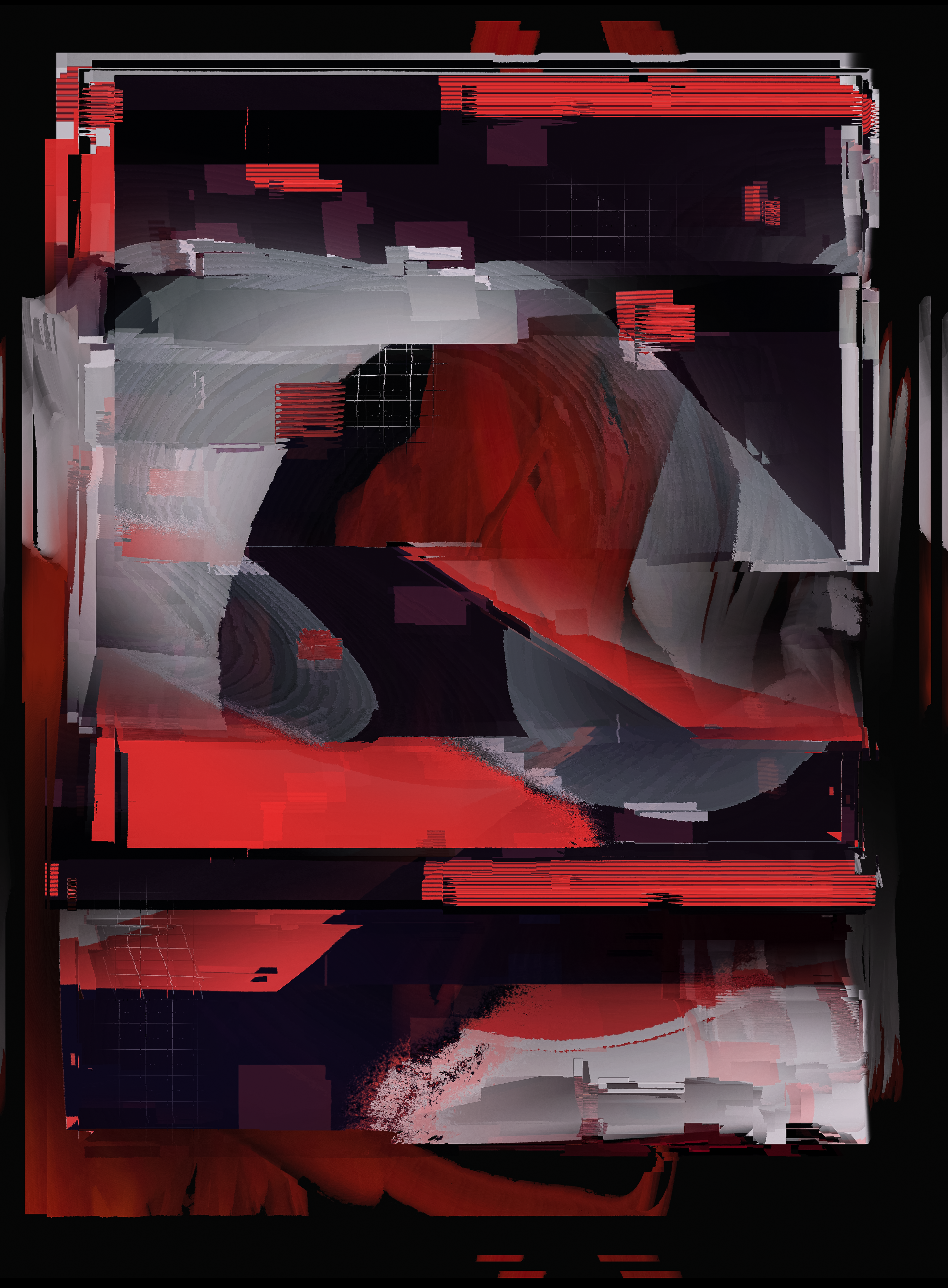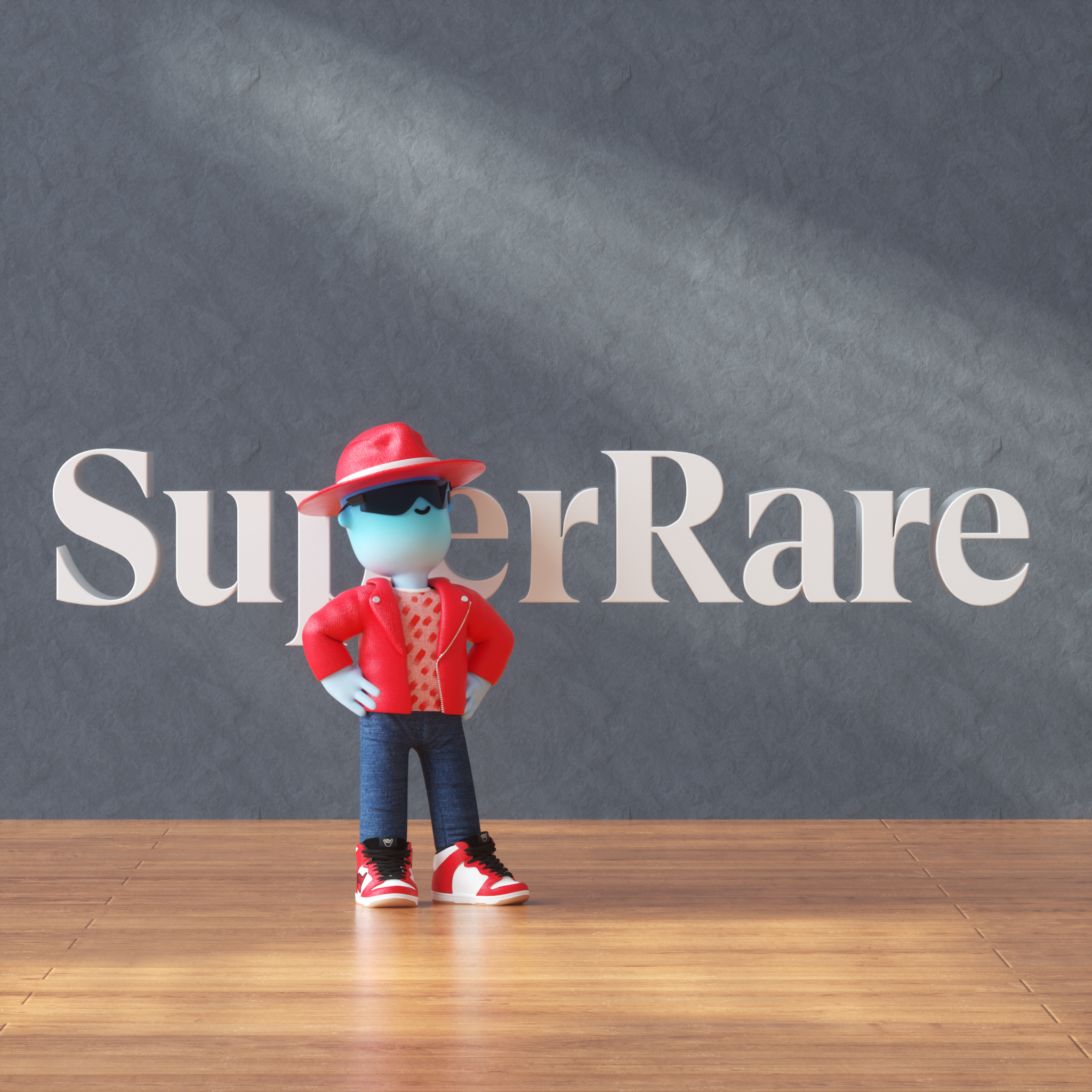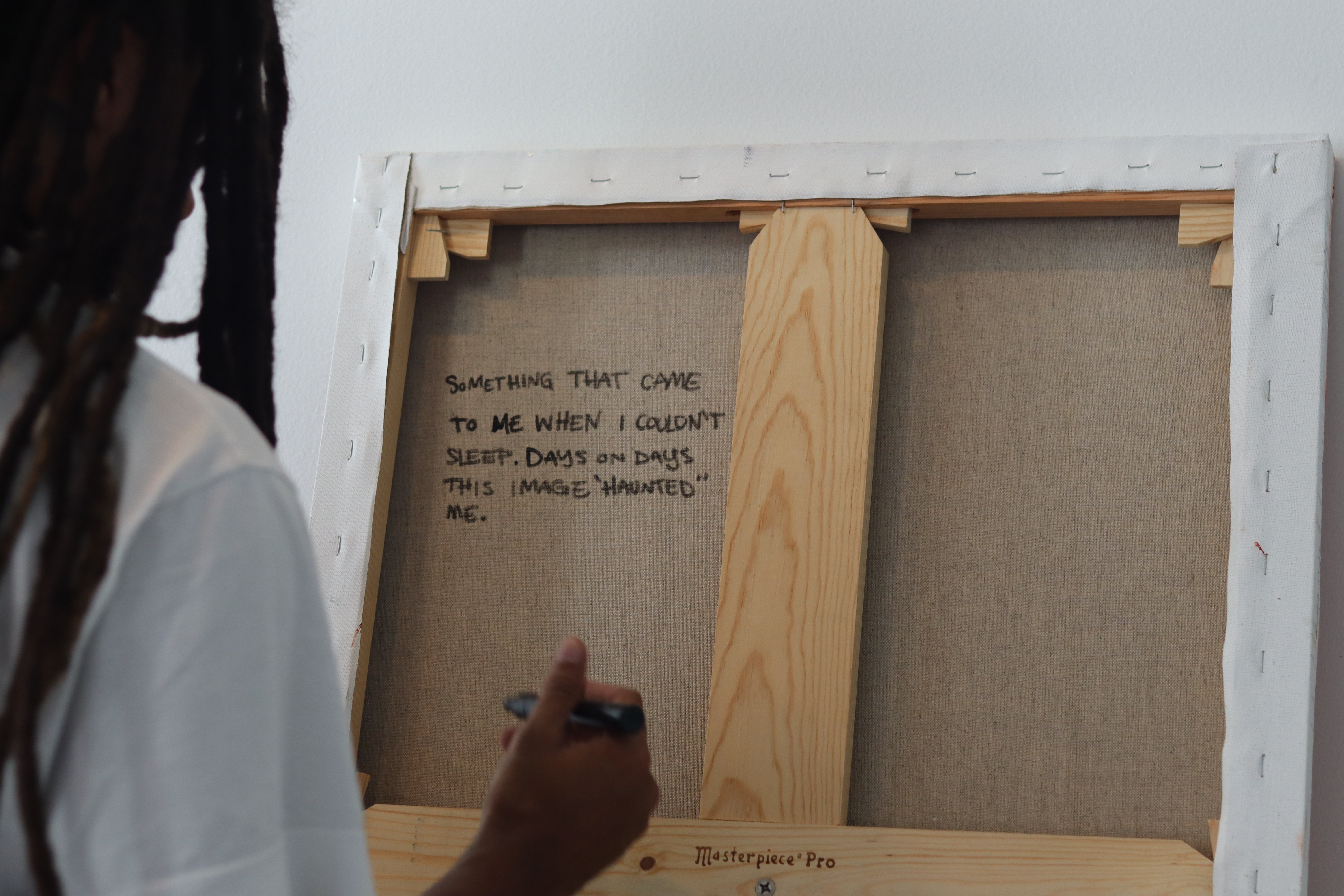Curated Conversation:
"Detective Jack: The Studio Reels" by ClownVamp
About the Artist:
ClownVamp is a conceptual artist who uses a combination of narrative and AI techniques to examine the socially constructed nature of our reality.
His work has been exhibited in New York, Paris, and Los Angeles. His solo show Chester Charles: The Lost Grand Master opened in New York City in 2023. ClownVamp and his work have appeared in Artnet, Outland, Surface Magazine, RightClick Save, and more. An avid collector of AI art and a member of the MAIF art collective, he lives in New York City with his partner and a very silly 10-year-old corgi.
About the Collection Detective Jack: The Studio Reels
The lost footage.
A few decades back, a hard-headed studio executive sought to turn the story of Detective Jack Crimson into a major network television show.
Detective Jack is the story of the only honest cop in the 1960s LAPD. With a square jaw and an unavailable heart, he is determined to fight for justice (if he can get out of his own way). Hard-drinking and fast-loving, he likes his vodka on the rocks and enjoys falling in love with women who always seem to be out to get him killed.
Underwritten by an orange juice company, the show was given the green light. In a pink-washed noir world, the production was to be set in Los Angeles. However, it was soon beleaguered by chaos on set, internal squabbling over casting, and quickly scuttled.
The only remaining footage from this thwarted effort, Detective Jack: The Studio Reels, are presented for the first and only time alongside audio from a potential soundtrack that was never released in record stores.
Technical details:
Each piece is a 4K AI video with accompanying AI audio. The video was generated using txt2video tools (Pika) and upscaled to 4K using Krea Video Upscaler and Topaz Video Upscaler. The audio was generated via Suno txt2audio models. The videos and audio were post-processed and edited using commercial video editing platforms.
Each is presented as a 1/1 NFT.
THE INTERVIEW
An: What was the origin of Detective Jack Crimson, and how does he embody the themes you wanted to explore in this collection?
ClownVamp: I've always loved pulp crime novels. I love their formulaic nature and how they play with the tension between knowing what's coming and the unexpected twists in that formula. My favorite art often elegantly manages that same tension.
I also love how pulp crime is underappreciated by critics, but is doing something so popular. It reminds me, for whatever reason, of Los Angeles, with its faded glory and natural beauty. Written off as traffic-filled and congested, but in my mind, beautiful and creative. And so Detective Jack Crimson came from these two loves, these two ideas, these two ways in which you have these underappreciated things.
A: The project is set in a “pink-washed noir world.” Can you elaborate on the role of “Barbienoir” in your art and its importance to the narrative and visual styles?
CV: Yes! So, Barbienoir was originally the result of a technical limitation. When I was making the first Detective Jack series in 2022, the generative image models lacked coherency and consistency. I was trying to come up with ways to create a world that feels cohesive, and I really love the color pink; I realized that if I washed all of the images in pink, it would create a visual coherency that would lend itself to a story universe, which is what I was trying to do.
The result was that I brought together this Noir set of prompts I was working on with various pink aesthetic prompts. I got this result, which was unexpected in some ways, but also felt right. Someone on Twitter said something like, "Oh, it's noir Barbiecore." I really liked that and thought: Barbienoir!
For me, Barbienoir was a way to deal with AI's lack of coherence and consistency and create something beautiful from that limitation.

A: Can you walk us through the technical process of creating these videos? What tools did you use and how?
CV: These videos are two firsts for me: my first video work and my first audio work.
I used text-to-video models, specifically Pika, to create these visions of this pink-washed Noir world. They are all text-prompted, without keyframes. Then, I use various upscaling tools, including Krea and Topaz, to bring these up in resolution to 4K.
Then, equally importantly, we're at this exciting moment with audio AI, which is very uncanny and very dubiously trained. I want to explore it while we're at this moment. So I created these four songs using Suno, which is one of the leading Audio models. Two of the songs are instrumentals and two songs have full lyrics. All of this was made using these commercial off-the-shelf tools.
.png?width=3840&height=2160&name=Product2%20(1).png)
A: You mentioned not using keyframes in your txt2video process. Can you explain why you chose this approach and how it impacts the final product?
CV: So, when creating a video, there are two main workflows. The one that gives you the most control is using keyframes, which allow you to create an image using a tool like Midjourney. Then, you have a video engine that converts that into motion. You can influence the motion. However, it's still the keyframes that are driving the visual aesthetics. And for me, that's really powerful and impressive, but it's less attractive than what these models do when generated purely through text.
I wanted the AI to interpret and show me how these concepts—the ideas of noir, television dramas, and Los Angeles — were represented in its training data. How does AI interpret this pink noir world?
The result is a much more ethereal vision than using keyframes with a lot of emergent and surprising things. For example, I started to get this unexpected, recurring result of a cup of orange juice being in the hands of my female character. I thought that was really amusing. It was this weird quirk in the training data that I don't fully understand. For some reason, it tied these concepts together like somewhere in the training data. It demanded to be sponsored by the orange juice company!
So, I created the idea that the TV show was underwritten by an orange juice company and prompted more orange juice content to complete the point. One of the best parts of AI is the way it makes these odd visual connections in our culture tangible and brings them to the forefront. I’m sure somewhere in there was some training data that involved heavy OJ product placement!

A: How does “Detective Jack: The Studio Reels” connect to your previous works, such as “Detective Jack: Season I and II” and “Detective Jack: The Cold Case”?
CV: It's all one cohesive story universe, but by design, I'm trying to explore how characters and "intellectual property" can be reimagined and remixed. In these pieces, I'm imagining this world in the 1980s, when a studio executive liked the Detective Jack Crimson universe and decided to turn it into a TV show.
We see this all the time with novels, comic books, etc. Sometimes, these IP remixes lead to great movies and TV shows, and sometimes (even often!) they can ruin our favorite books. In the age of AI, we'll see all sorts of new ways that IP is remixed, so I wanted to explore what that might look like. For example, the Jack Crimson Audition reel shows different variations of how AI might "cast" the role.

A: How does this collection explore the socially constructed nature of our reality?
CV: A core belief of mine is that we underappreciate how much of "real" life is constructed, how many masks we're all wearing, how much we are influenced by popular media and advertising, and how our parents and teachers condition us to believe certain "truths."
There's a lot of freedom in questioning and interrogating those core beliefs. AI's ability to construct worlds gives the sense of looking into the multiverse and other constructed truths. They are artificial, they are fake…right? With Detective Jack, I've created various games, mechanisms, and art projects exploring this one world. And it starts to get into this question of what is real? Where does the line get drawn between an AI-generated world and the real world where we are all generating a version of ourselves to present to others? And so, for me, there's something inherently very real about the world of Detective Jack.

A: How does the use of AI in your work challenge or complement traditional notions of art and creativity?
CV: It shifts the bar to focus very squarely on concept and emotion. If craft is easier (not easy per se, but easier), it somewhat ironically highlights how art makes us feel rather than how it is made.
This is a massive positive for artists and art appreciators. It's too easy to point to incredible craftsmanship and demand that it be considered "art."
As AI tools increasingly become pixel-perfect, this refocus on emotion and concept will be particularly acute for AI artists. Yes, they can keep pushing forward on the frontier of creative technology. Still, the acceleration will be so fast that, at a certain point, you will be forced to examine whether you are simply using technology or making art?
.png?width=3840&height=2160&name=Amanda1%20(1).png)
A: Can you talk about the role of music in this collection and how you used AI to generate the five original songs?
CV: One of my realizations when exploring video work for the first time was that excellent video work is also about having excellent audio. I quickly realized that in creating the universe, I needed to create a soundtrack.
At the same time, we were starting to see these new AI audio models come out. They have a specific uncanny valley nature, where they sound almost right, but there's something off. I liked the idea of these imagined alternative soundtracks in this imagined alternative TV Universe. The resulting audio tracks were meant to "feel" like something that could be 40 years old: analog pops, big band recordings, and a certain inherent reverb.
Two of the songs also include lyrics that were either written entirely by AI (in the case of Product Placement) or between AI and me (in the case of the title theme song). The audio of Product Placement showcases how commercial jingles are designed to infect your ear with catchiness, even if they are not saying much of anything…

A: How do you see the future of AI in art, particularly in narrative and multimedia projects like this one?
CV: We will quickly move away from forms that mirror past formats. Right now, we are still simulating the past through images, videos, songs, etc.
The age of AI video will be magical and brief. Where we're more likely to go in the medium term is around creating totally new AI-native art formats. Something that looks like a blend of a movie, video game, and immersive environment. It will likely look like a world model, which is the direction many video game studios are going. We will be exploring and playing with true AI-native art much sooner than we expect.
A: What’s next for you and Detective Jack? What continuations of this story can we look forward to?
CV: I'm really interested in other ways to extend a story universe. These AI tools are very quickly moving to fully immersive and interactive. I'm excited about things like being able to make a full-length Detective Jack movie using AI tools. Still, I'm more excited about how you do something different than a movie. How do you create interactivity? How do you create game-like experiences? How do you build worlds with inherent conditional logic that people can play with and enjoy?
And most importantly, will Detective Jack ever find long-lasting love!?

Detective Jack: The Studio Reels, featuring four 1/1 pieces, each with a reserve price of 0.1 ETH, is coming to SuperRare on Tuesday, July 16th.



